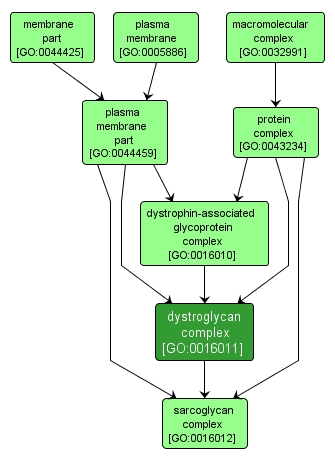| Desc: |
A protein complex that includes alpha- and beta-dystroglycan, which are alternative products of the same gene; the laminin-binding component of the dystrophin-associated glycoprotein complex, providing a link between the subsarcolemmal cytoskeleton (in muscle cells) and the extracellular matrix. Alpha-dystroglycan is an extracellular protein binding to alpha-laminin and to beta-dystroglycan; beta-dystroglycan is a transmembrane protein which binds alpha-dystroglycan and dystrophin. |














